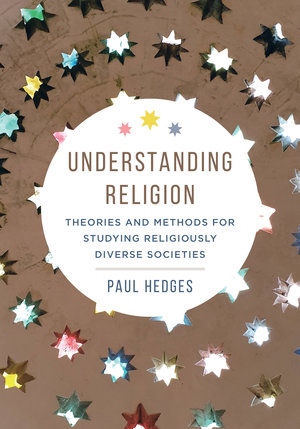By Paul Hedges, author of Understanding Religion: Theories and Methods for Studying Religiously Diverse Societies
Almost seven years ago, I started a new job at a Graduate School specialising in International Relations in Singapore. As a Religious Studies scholar, I was somewhat like a duck out of water, but amongst my tasks was to teach a course in method and theory in the study of religion.
Most of my students were in Asian Studies, with a Political Science focus, but they also came from International Relations, Strategic Studies (basically war studies), and International Political Economy. Very few had a Social Science or Humanities base, let alone an RS background, with many holding Business Studies or Political Science degrees. Names like Weber or Durkheim, Foucault or Spivak, were often met with looks of incomprehension.
So, I was faced with a challenge. On the one hand, I had to get these students from zero to masters’ level in theoretical perspectives. And, on the other, I needed to make them see how and why the abstract debates of Religious Studies were relevant to them.
As I prepared material for this class, I realised there really was a need for a coursebook. But none of the available options seemed to fit my task. This seemed odd, as the RS world – like many others – is flooded with textbooks and introductory studies.
I set out to write initial chapter explainers for my students, but realised that writing to my niche situation wouldn’t result in a very useful book. At the same time, my situation was not that unusual. Many students take a one-off course in RS amidst studies elsewhere, so we need to make the theory and method relevant beyond RS. Additionally, almost every RS student comes into their first classroom with no background, and with little sense of why the debates are relevant to them. Even at graduate level, many students may be transferring from other disciplines. And most RS students don’t become academics, so realising how and why the things we study are relevant in the wider world is useful for those who won’t get involved in the arcane debates of ivory towers for their own intrinsic fascination.
Over six years, these insights transformed into my new book, Understanding Religion: Theories and Methods for Studying Religiously Diverse Societies. The book is not just a text of my course, or my teaching interests, but has tried to cover as comprehensively as possible the major theory and method debates. Staying up to date in these debates, including in those which aren’t my natural territories, became a labour of love.
My book also takes a strong decolonial lens. I realised this couldn’t just be an obligatory chapter, but must influence the approach throughout the whole book, which required me to think and learn more deeply about my teaching and the discipline. It made me understand the book as inherently political. I don’t mean big “P” party political, nor that I take a political stance, but in exploring the field – and how it is studied, written, and researched – involved engaging the politics of RS. I was developing what had been implicit in my thinking but was becoming explicit, which was something of a theory of how we study and understand. While I don’t foreground my own interpretation, the Introduction briefly sets out a Critical Hermeneutical Phenomenology (the book on that is now on my to-write list).
In practical terms, all of this means a book of almost 600 pages and over two hundred thousand words. But, importantly, one that uses case studies (two at the end of each chapter) to help bring out the real-world implications of the theory – these range from the way that Asian Christians frame societal and familial practices of ancestral veneration, how and why Jehovah’s Witnesses in the USA relate to veneration of the flag, the lived practices of devotion of Mexican American Catholic women, connections of religion and nonreligion, and a comparison of Buddhist and Christian sitting practices amongst others.
I hope that this book will be useful, and my first review already suggests that it is affecting the way some people design and teach their courses. My journey to create this book will hopefully play a part in the journeys of other teachers and students. I would love to hear from you if this has been the case.
